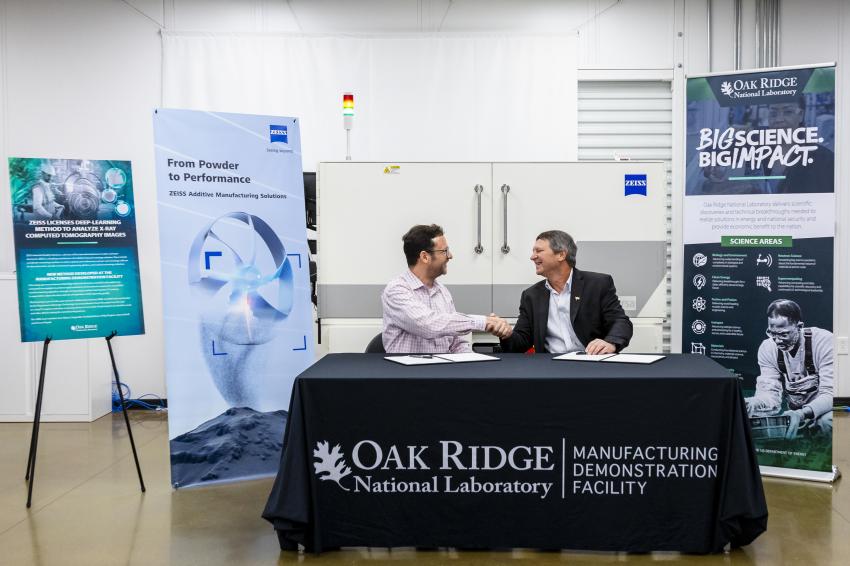CT to perform rapid evaluations of 3D-printed components
20.09.2023 - ORNL’s machine-learning algorithm Simurgh is now licensed to be used for rapid evaluations of additively manufactured components with industrial X-ray computed tomography.
Incorporating machine learning into CT scanning is expected to reduce the time and cost of inspections by more than ten times while improving quality.The licensing is part of a five-year research collaboration between ORNL and Zeiss, supported by DOE’s Advanced Manufacturing and Materials Technologies Office and a Technology Commercialization Fund award. The research has focused on using CT scanners and other measuring devices to see inside 3D-printed parts to check for cracks and other defects during the manufacturing process.
The research is being performed at DOE’s Manufacturing Demonstration Facility (MDF) at ORNL. The facility is home to the MDF Consortium, a nationwide group of collaborators working with ORNL to advance the state of the art in US manufacturing technology under the guidance of DOE’s Advanced Manufacturing and Materials Technologies Office.
In the characterization lab at the MDF, Zeiss has equipment including industrial computed tomography systems and scanning electron microscopes that are being used to look for the slightest defects in 3D-printed parts. The scan is only the first step, however. The data from the scan must run through complex analytics to determine where flaws are located. This process requires a lot of computing horsepower, which equates to time and cost. The Simurgh framework uses deep learning to speed up the scanning and analysis time significantly while providing even more accurate results.
This kind of highly accurate characterization is critical for high-value parts that must operate in extreme environments where failure is not an option. ORNL used CT scanning techniques to certify the performance of nuclear fuel assembly brackets that were inserted into the Browns Ferry Nuclear Plant in Alabama in 2021, the first time a 3D-printed part has ever been placed inside a nuclear reactor. CT characterization was also critical to creating 3D-printed turbine blades that were recently tested in a land-based engine where blades spin at speeds of up to 12,000 revolutions per minute in an environment that can top 800 degrees Celsius. The blades withstood the harsh environment of the turbine and performed exactly as expected.







